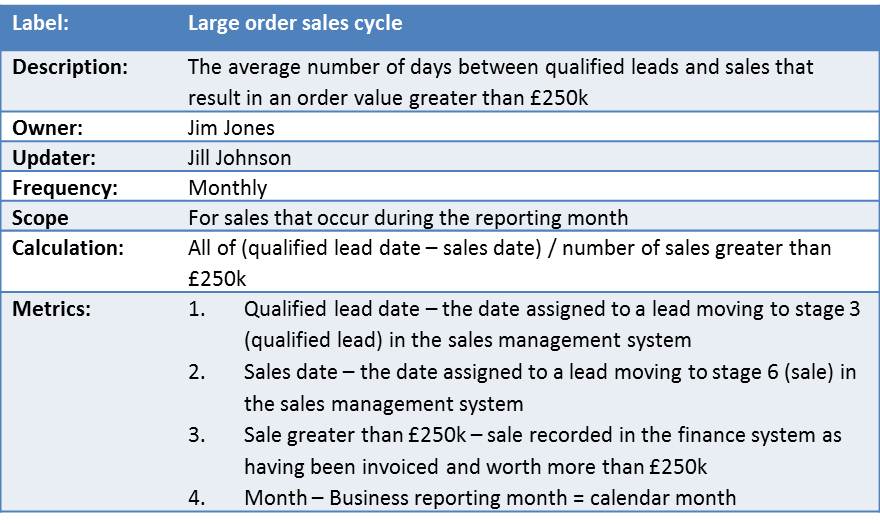Performance Measures – Part 3 : A Key Performance Indicator (KPI) needs to be clearly defined, rated in terms of importance and calculated and assigned ownership. This week we will look at calculation and assigning ownership.
The measure needs to be calculated and ownership assigned – Ownership and calculation have been put together intentionally. Practically speaking, assigning ownership of a KPI should be undertaken before the calculation is made to ensure the right person is responsible for the activity. This begins to highlight the importance of ownership. To get anything done, all objectives and KPIs must have owners and that means an individual not an entity such as a department.
There are two types of ownership we need to concern ourselves with: Owners and Updaters. An owner is the person who takes full responsibility for the KPI. The updater (who could be the owner as well) is the person who gathers the required data and updates the KPI when required. An updater could report to the owner or be a shared administrator. An effective owner should:
- Have some level of control over the KPI
- Own or actively contribute to the KPI’s objective
- Agree to own the KPI (and not just be assigned to it)
- Know where to acquire the measurement data
- Ensure the KPI is updated on time with valid data
An owner who is in a position to comply with the above is much more likely to take the job of managing the KPI seriously. All too often, KPIs are foisted upon individuals who have no real control or interest in the measure itself (or the associated objective) and therefore update the information begrudgingly, or worse, with incorrect information.
The first job of the owner is to ensure that the KPI is properly described, that there is agreement on the validity (i.e. the right measure has been chosen) and that the KPI calculation (if there is one) can be based on available data. Available data in this context can mean data that will be made available in the future as well as existing data.
Using the same example we used last week in Performance Measures/KPIs – Part 2 “The average number of days between qualified leads and sales that result in an order value greater than £250k’, we can examine what this means in practical terms. The KPI description usually provides enough information to give an indication as to where the data being measured resides. For example, in the KPI ‘Total revenue generated for consultancy services’ the data will almost certainly reside in the company financial system. In the case of our example, the calculation is a little more complicated.
For each KPI the following things need to be taken into consideration:
- Description: A sentence to describe as accurately as possible what the KPI is for.
- Label: The short description, used for presentational purposes, generally 3-5 words.
- Owner: The individual who owns and will drive the KPI (this applies equally to objectives, indeed, ownership of objectives is more important than ownership of KPIs as the former drives the latter).
- Updater: The individual who is responsible for updating the KPI on at the pre-defined times
- Calculation: A mathematical formula that describes how the data elements (tangible perceivable items) are combined to provide a number, percentage or currency (sometimes a yes/no).
- Frequency: How often the KPI is counted and recorded.
- Scope: What should be included or discounted, often a cap or data range.
- Metrics: The data and the sources of data used in the calculation, it is important to provide a description of the metric items individually to avoid ambiguity
It is only when looking closely at a KPI requiring a calculation that it becomes evident all of this information is required. It is good practice to identify and record all this information for every KPI during this phase. Typically a table, such as the one below, can be used:
In summary, when calculating a KPI and assigning ownership take care to:
- Assign the right owners, it is the only way to ensure things will get done
- Create a realistic calculation that is based on metrics that exist or can be found
- Be realistic about frequency, not everything has to be done in real-time!
Check out the Intrafocus KPI training for more information on developing successful performance measures/KPIs
end of Performance Measures – Part 3



